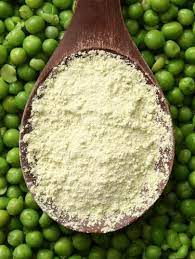Everything You Need To Know About Pea Protein And Including Its Types, Forms, Process Etc…
 |
| Pea Protein |
Yellow and
green split peas, also known as Pisum sativum, are the source of Pea Protein, a dietary product and
protein supplement. It can be used as a dietary supplement to boost a person's
protein or other nutrient consumption or as a stand-in for other foods (for
example, switching dairy milk for pea milk). It is used in the production of
food as a powdered component, such as a thickening, foaming agent, or
emulsifier.
Among the
four main classes of Pea Protein (globulin,
albumin, prolamin, and glutelin), the two most important storage proteins in
pea seeds are globulin and albumin. Legumin and vicilin, two subclasses of
globulin that are soluble in salt solutions, are also known. Because it is
soluble in water, albumin is thought of as a cytosolic protein having metabolic
and enzymatic properties. With a high quantity of lysine, pea protein has an
amino acid profile that is well-balanced. Pea protein's chemical and physical
features, including as hydration, rheological properties, and surface
characteristics, are greatly influenced by its content and structure as well as
the circumstances under which it is processed. Pea protein may be employed as
an innovative and successful alternative to soybean or animal proteins in
functional foods due to its accessibility, cheap cost, nutritional content, and
health advantages.
Coherent Market Insights estimates that the global pea protein market
was worth US$ 234.88 million in 2021 and is projected to grow at a CAGR of
10.4% from 2022 to 2030 to reach US$ 573.15 million.
Pea Protein may
be found in a variety of forms, including pea protein isolate, pea protein
concentrates, and pea flour. Concentrate forms of pea protein, which are mostly
used, may be made by an acid hydrolysis procedure. In order to maximize yields
and determine functional, dietary, and structural characteristics that
influence their suitability for use in the food sector, pea protein extraction
needs choosing the right treatments. To generate Pea Protein concentrates and isolates, a number of extraction
procedures are also utilized, such as wet extraction, dry fractionation, salt
extraction, micellization, and mild fractionation.
Cleaning,
drying, sorting, dehulling, and splitting are pre-treatment processes that pea
seeds go through before protein extraction. By separating the cotyledons and
hulls from whole pulses, this process makes protein extraction easier without
compromising the pulses' technological-functional properties. The effectiveness
of the extraction as well as the features of the Pea Protein isolate are influenced by a variety of variables,
including the extraction process, pH, solubilization time, number of washes,
ionic strength, solvation ratio, temperature, extraction equipment, and
filtering or purification procedures.
You can also read the press release by Coherent Market Insights https://www.coherentmarketinsights.com/press-release/pea-protein-market-3253



Comments
Post a Comment